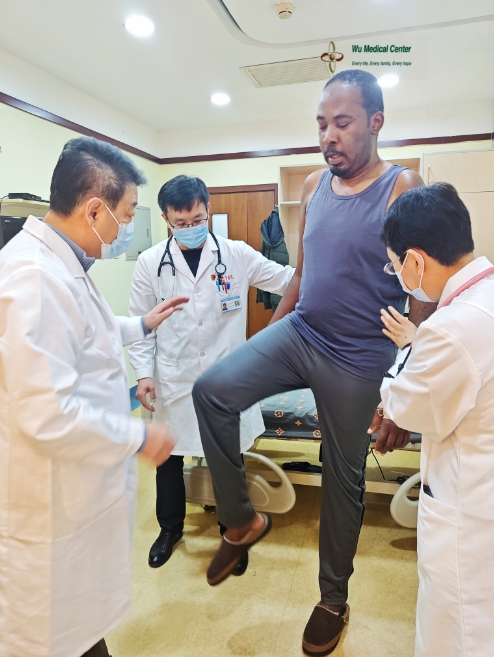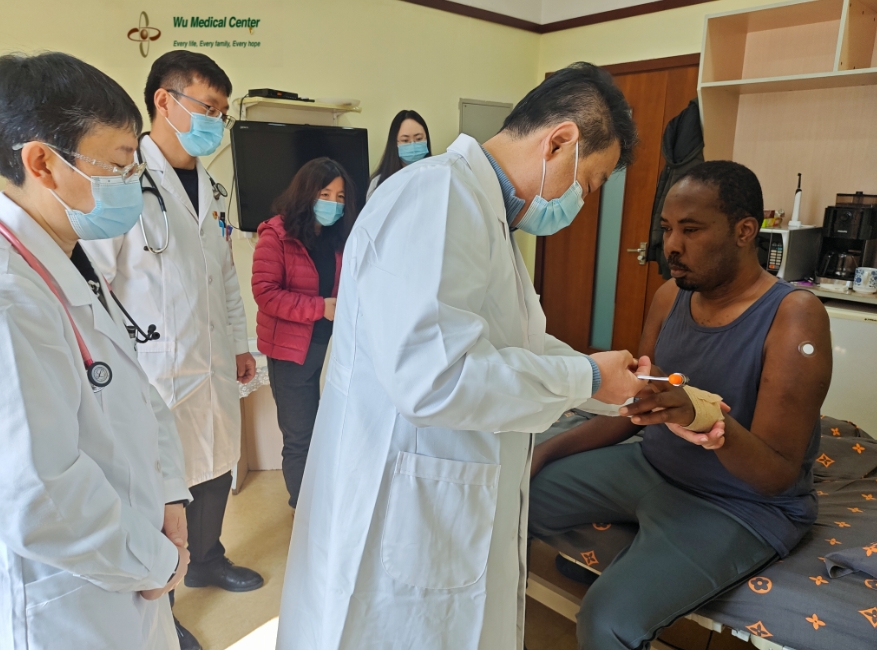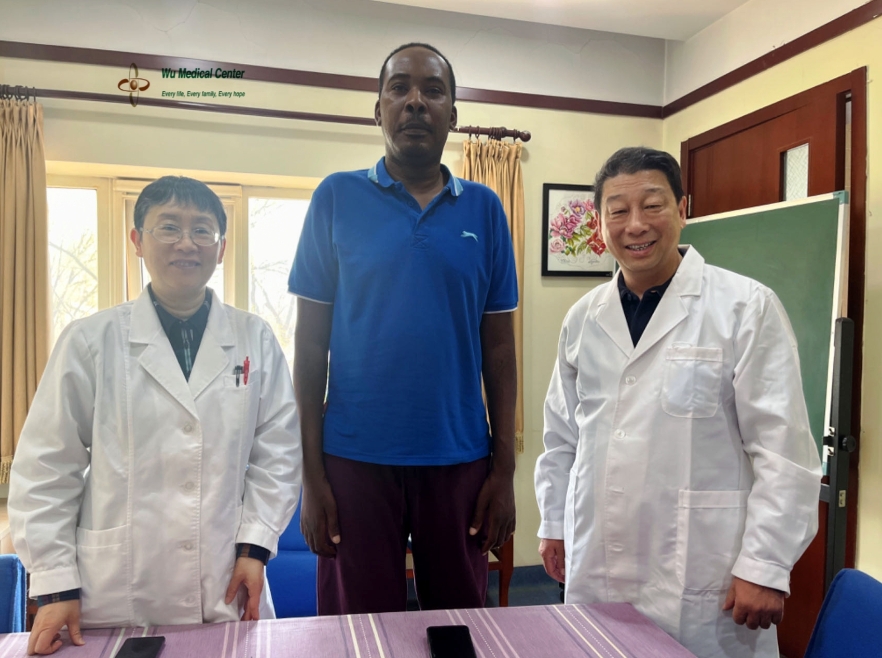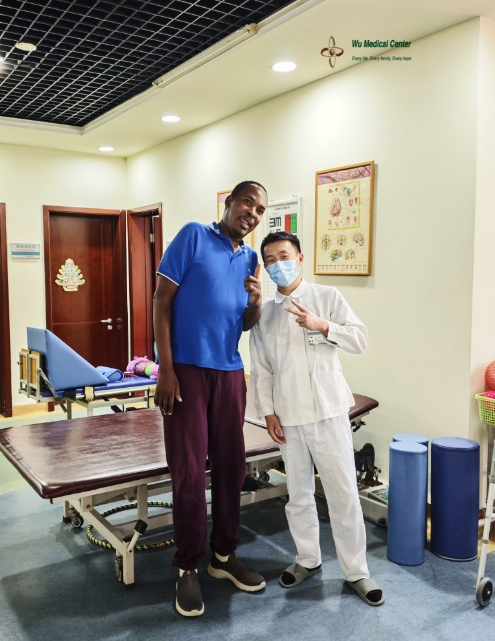J Balogun-Motor neuron disease- Amyotrophic lateral sclerosis-(English)
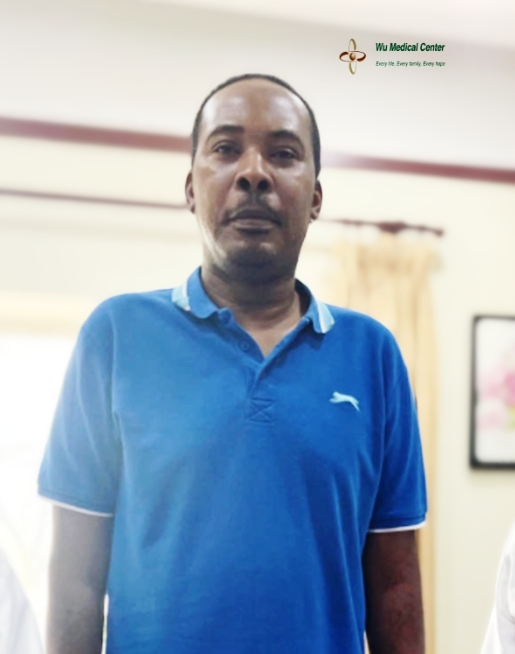 Patient Name: J Balogun
Patient Name: J Balogun
Gender: Male
Age: 42 Years old
Nationality: English
Diagnosis: Motor Neuron Disease- Amyotrophic lateral sclerosis
Condition at Admission:
The patient had noticed weakness in his right upper limb and difficulty raising his hand to touch objects for the past one and a half years (July 22). He was diagnosed with "Motor Neuron Disease- Amyotrophic lateral sclerosis" at a local hospital and was taking the medication riluzole, but he felt that the effect was not significant and needed to regularly check his liver function, so he stopped taking it. Despite this, the disease still progressed. He does not have significant swallowing difficulties or water choking.
Admission Examination:
The patient's pulse rate is 74 beats/min, and his respiratory rate is 20 breaths/min. His blood pressure is 121/77 mmHg. He is of normal development and of average nutrition. There is no cyanosis on his lips, and there is no redness or swelling in his throat. The symmetry of his thorax is normal, and the movement of his chest wall during breathing is basically normal. The breath sounds in his both lower lungs are clear without obvious dry or moist rales. His heart sounds are strong with regular rhythm, and there are no murmurs in any areas of his heart valves. His abdomen is flat and soft, and his liver and spleen are not palpable. There is no edema in his both lower limbs.
Neurological examination:
The patient is clear-headed and has a good mental state. His speech is clear. His calculation, memory, and orientation are all normal. His pupils were 3mm in diameter and his light reflex was sensitive. His eye movements were flexible in all directions. The symmetry of his bilateral nasolabial folds and forehead wrinkles was normal, his tongue was in the center with normal muscle tone, and his tongue movement was normal. He had strong cheeks and chewing strength, and drinked without choking. His bilateral soft palate lift was strong, and the epiglottis was in the middle. His turning neck and his shoulder rotation and elevation muscle strength was grade 4, his proximal upper limb muscle strength was grade 2, and the patient could raise his arms to the abdomen while lying down, to his lower abdomen while sitting down. He had a grade 3 strength in his left wrist extensor muscle and a grade 3 grip strength in his left hand. His right upper limb proximal muscle strength was grade 2- and he could not raise his upper arm off the bed when supine. When sitting, he could raise his upper arm to the lower abdomen. He had a grade 3 strength in his right wrist extensor muscle and a grade 3 grip strength in his right hand. His fine motor skills were poorly performed. He had grade 4- strength in his both lower limbs, grade 4- strength in his both foot dorsiflexion and plantarflexion, and walked with dragging feet. He had weak abdominal and lower back muscles, which maked turning over and getting out of bed somewhat difficult for him. He had visible muscle atrophy in both arms and legs, with muscle twitching. His sensory function in both arms and legs was generally normal. The muscle tone in his both upper limbs was basically normal, while that in his both lower limbs was slightly elevated. The distal tendon reflexes in his both arms and legs were decreased, and the pathological reflexes on both sides were negative. His finger to nose test was moderately performed, while his left hand's pointing test was moderately performed and his right hand's pointing test was clumsy. His left hand's rotation test was also clumsy, and the right hand’s rotation test was worse. His heel-knee-thigh test was slightly unstable due to weakness of the lower limbs. His cerebrospinal membrane irritation test was negative.
Treatment process:
The patient was admitted with a clear diagnosis of "primary lateral sclerosis of the motor neuron disease". During his stay in the hospital, he received nerve stem cell therapy to repair the damage to the motor nerves, mesenchymal stem cell therapy for nutritional, endocrine, and immune support, and adjuvant use of drugs such as edaravone, riluzole, neurotrophic factors as CAST treatment. Additionally, he received comprehensive rehabilitation treatment.
After treatment:
The patient's motor function has improved significantly, with increased muscle strength in his limbs. His left upper limb proximal muscle strength has improved to grade 3+, and he can raise his left arm above his head when supine. He can perform movements in all directions. When sitting, he can raise his upper body to the neck. His left wrist extensor and flexor muscle strength is grade 5- and his grip strength is grade 5-. His right upper limb proximal muscle strength has improved to grade 3, and he can raise his right arm above his head when supine. His right wrist extensor and flexor muscle strength is grade 4+ and his grip strength is grade 4+. Both his hands show increased flexibility in performing delicate tasks, compared to his admission. His bilateral lower limb muscle strength is grade 5-. His both feet can flexion and dorsiflexion of both lower limb to grade 5-. The performance of his bilateral finger-to-thumb test and his bilateral hands rotation test has improved. His bilateral heel-knee-thigh test has also been completed well. His abdominal and lower back muscles have increased in strength, with faster and more flexible ability to turn over and sit up on his own. His gait has improved, with a reduction in dragging feet during walking. His energy, physical stamina, and motor balance and flexibility have also improved.
